TEN YEARS AGO TODAY! THE REAL TEST OF THE 2014 HUSQVARNA FC250
Q: FIRST AND FOREMOST, IS THE 2014 HUSQVARNA FC250 BETTER THAN THE 2013 FC250?
A: Yes! Absolutely! In every way, shape and form!
Q: WHAT’S THE STORY BEHIND THE HUSQVARNA FC250?
A: To answer that question we need to provide a brief history lesson. The Husqvarna FC250 (then called the TC250) was introduced in 2004 under the Italian-based Cagiva flag, though the first version was never brought to the USA. MXA tested the 2005 TC250 and we didn’t like it. Its distinguishing traits were an electric starter and 237 pound dry weight. In 2007 BMW bought Husqvarna from Cagiva and embarked on the goal of improving the TC250. The BMW Formula 1 engineers unveiled the “Red Head” engine, which was minuscule in size and produced decent power for a 250 four-stroke. After coasting through production for several years, the TC250 was growing long in the tooth. Then, on January 31, 2013, KTM’s CEO, Stefan Pierer, purchased Husqvarna from BMW.
KTM stepping in was an impressive step foward — and not just because BMW was going to sell it or dump it. KTM has a passion for motorcycles and they seriously wanted to improve the Husqvarna brand and catapulted the once-Swedish company into the spotlight.
Stefan Pierer, however, was forced to make a difficult decision. Given such a short time frame between purchasing the company and the 2014 model release calendar, Pierer had two choices. (1) Opt out of introducing a Husqvarna motorcycle lineup for this year and focus on 2015 instead. (2) Use KTM’s resources to manufacturer Husqvarna models using KTM technology and visually offset the Husky bikes with different plastic. He wisely chose the second option.
Q: WHAT ARE THE DIFFERENCES BETWEEN THE HUSQVARNA FC250 AND THE KTM 250SXF?
A: Though the architecture is identical on the engine, frame, suspension, swingarm, clutch, brakes–there are differences between the Husky FC250 and its KTM 250SXF brother.
(1) Plastic. The most obvious difference is that the FC250 has its own unique plastic. Gone is the red and white motif of the Italian-based Husqvarna color palate. Stefan Pierer wanted to return to Husky’s heritage, so the FC250 is adorned in white plastic with blue and yellow accents (the national colors of Sweden). It’s interesting to note that the gas tank shape is different from the KTM 250SXF (though the fuel capacity, at 1.98 gallons, is the same).
(2) Subframe. The FC250 subframe is made out of injection-molded polyamide, which is really just a fancy name for “plastic.” The KTM 250SXF subframe is composed of aluminum. We should also point out that subframe shape and mounting points are different between the bikes. Forget putting the polyamide subframe on a 250SXF and vice versa.
(3) Side panels. The side panels are uniquely Husqvarna. Why? The plastic subframe forced the engineers to reconfigure the airbox cover. And, unlike with a KTM, the Husqvarna airbox cover and left-side panel are constructed using one piece of plastic.
(4) Rims. Fear not, because the 2014 Husqvarna FC250 comes equipped with black-anodized D.I.D Dirt Star rims and not the flimsy silver Excels that come on the 2014 KTM 250SXF. Apart from that, the TC250 has silver spokes, while the 250SXF has black spokes.
(5) Rear axle. Instead of the 25mm axle that KTM relies on, the Husky FC250 uses a 20mm axle. This means that the swingarm and axle blocks are also configured to accept the smaller rear axle. The rear axle nut on the Husky is also capped (the KTM nut is hollowed out).
(6) Hand guards. The 2014 Husqvarna FC250 comes with white hand guards. The KTM 250SXF doesn’t come with hand guards.
(7) Seat bolts. Instead of KTM’s single seat bolt, the Husqvarna FC250 uses two seat bolts hidden inside the hand holds. They are a nuisance to extract when removing the seat. Whatever you do, do not pick the Husky up by its white rear fender. It will break. Use the hand holds.
(8) Color choices. Aside from the obvious color differences, the FC250 has a black rear sprocket instead of silver. It also has a yellow powder-coated valve cover (the previous generation had a red valve cover and was appropriately called the “red head”). However, “yellow head” didn’t have a very sporty ring to it. The grips have “Husqvarna” embedded in them (instead of “KTM”) and are black and gray (instead of black and orange). The clutch cover also has the Husqvarna logo, as opposed to “KTM Racing.” The shock spring is white instead of orange, and the muffler has “Husqvarna” written on the can, whereas the KTM doesn’t have an inscription.
(9) Map switch. The Husqvarna comes a map switch on the right side of the handlebars. With two preprogrammed ignition maps, the user can toggle between two different settings. The second map retards the timing by one percent and has a mellower hit. This switch can be changed while the bike is running and in gear.
(10) Muffler. The two bikes share identical head pipes, and the mufflers are very similar. Both are Euro-spec, have the same canister length and end cap size, but the FC250’s noise diffusing mesh screen is larger.
Q: WHAT PARTS ARE INTERCHANGEABLE BETWEEN THE HUSQVARNA FC250 AND THE KTM 250SXF?
A: Almost everything, but there are several parts that can’t be swapped between the models. It’s not possible to swap the subframe, seat, side panels or rear fender. It is feasible that a backyard engineer could create a KTM/Husqvarna Frankenbike, but it would look like a hot mess.
Q: WHERE WOULD THE 2014 HUSQVARNA FC250 HAVE FINISHED IF IT CAME IN TIME FOR MXA’S 250 FOUR-STROKE SHOOTOUT?
A: That is a hypothetical question, given that we received the Husky FC250 months after ranking the other 250 four-strokes in the class. However, the MXA wrecking crew is ever vigilant. We don’t merely conduct a one-day tests before setting hands to computer. We have logged many laps and races on the FC250 since getting it and feel confident that we could rank it accurately after the fact .
Where would the 2014 Husky FC250 finish in our 250 shootout? Fifth. The order would be (1) Kawasaki KX250F; (2) Yamaha YZ250F; (3) Suzuki RM-Z250; (4) KTM 250SXF; (5) Husqvarna FC250; (6) Honda CRF250. Why wouldn’t it be in a dead tie with the KTM 250SXF—since they share the same engines and suspension? Oddly, our Husky FC250 had several mysterious foibles that, in stock condition, detracted from its overall performance. The FC250 is still better than the Honda CRF250 in the engine, handling, clutch and brake department.
Q: WHAT ARE THE MOST SIGNIFICANT FEATURES OF THE 2014 HUSQVARNA FC250?
A: The list is rather long: electric starter, polyamide subframe, hydraulic clutch, Brembo brakes, shrieking powerband, no-tools airbox, horsepower and white plastic motif.
Q: HOW MUCH DOES THE 2014 HUSQVARNA FC250 COST?
A: $8049. To compare, the 2014 KTM 250SXF retails for $7999. The Husqvarna FC250 has the distinction of being the most expensive 250 four-stroke on the market by $50.
Q: HOW FAST IS THE 2014 HUSQVARNA FC250?
A: It’s just as fast as the KTM 250SXF on the dyno (given that the Husky FC250 uses the KTM powerplant). If you’re unfamiliar with MXA’s opinion on the DOHC engine with DLC-coated finger followers and titanium valves, let us spell it out for you. The Husqvarna FC250 is fast. How fast? It pumps out 42.92 ponies at 13,500 rpm.
The track is where the similarities between the KTM 250SXF and Husqvarna FC250 end. In a head-to-head comparison the KTM overpowers the Husky. How come? For that answer, read below.
Q: WHAT CHANGES DID THE MXA WRECKING CREW MAKE TO THE 2014 HUSQVARNA FC250?
A: Would you believe that several backyard fixes made a measurable difference to the performance of the Husky FC250? Here’s what we did to get the most out of the Swedish wonder.
(1) Mapping. The FC250 comes equipped with a map switch that has two preprogrammed ignition settings. Map 1 is more aggressive and designed for loamy tracks where traction is at a premium. Map 2 retards the timing by one percent and mellows out the hit for hard pack tracks. Every MXA test rider vastly preferred Map 1 in all conditions.
(2) Exhaust. The stock FC250 muffler is nearly identical to the KTM 250SXF muffler in every way, shape and form. That is, except for the noise reduction insert. While it’s true that the KTM muffler has its own quiet insert, the KTM’s mesh screening burns out in short order. The Husky noise reduction insert uses stouter mesh and stood the test of time. Do yourself a favor. Remove the end cap bolts and use needle-nose pliers to pull away the mesh screening. Doing so will improve throttle response and low-end power. Or invest in an aftermarket exhaust system.
(3) Side panel. We’re big fans of the Husqvarna FC250 body styling. The white/yellow/blue scheme harks back to the glory days of Husky. Unfortunately Husqvarna broke a cardinal rule to design – form should always follow function. The one-piece number plate and airbox cover may kill two birds with one stone, but there is a problem. Designed for use on the enduro models, the FC250 airbox cover is sealed up tighter than King Tut’s tomb. When test riders complained that the Husky didn’t feel as responsive down low as the KTM 250SXF, we removed the side panel and had them ride without it. They reported a vast improvement. So, we grabbed a cordless drill and bored five quarter-size holes into the left-side panel just in front of the lip enclosing the air box. For good measure we drilled two more holes at the top of the side panel. The result was remarkable. We noticed an improvement throughout the power range, including throttle response and over-rev.
(4) Air filter cage. The Husqvarna FC250 uses the KTM 250SXF air filter cage. What’s interesting is that the KTM cage has a backfire screen integrated into the plastic housing. We always remove the mesh screening to encourage air flow to the engine on the KTM 250SXF, so it was only natural that we do the same with the Husky FC250 cage. After carefully removing the mesh screening and using a fire-retardant air filter, we noticed an additional improvement in throttle response.
(5) Gearing. Surprise! Not really. The FC250 is geared too tall. On most tracks we added a tooth to the rear sprocket in order to close the massive gaps between second, third and fourth gear. At times we discovered that adding two teeth to the rear sprocket was necessary.
Q: HOW DOES THE 2014 FC250 HANDLE?
A: We love chromoly steel frames, or maybe we hate aluminum Delta box frame. Either way the Husqvarna FC250 uses the KTM 250SXF frame. The difference is that KTM uses an aluminum subframe, while Husky relies on a plastic subframe. Husqvarna swears that the geometry between the two bikes is identical. Yet test riders swore that the FC250 felt uniquely different. They swore that the Husqvarna cornered better than its KTM counterpart. Though it seems farfetched, there is a difference. The FC250 performed more favorably in flat corners and across square-edged bumps. We believe that the flex of the polyamide subframe is the reason.
Q: WHAT ARE THE BEST WP FORK SETTINGS?
A: Husqvarna would be wise to step out from under the WP umbrella in 2015, although the 2013 TC250 had the distinction of having poor performing Kayaba forks. The Kayaba forks had a high oil height that prevented the forks from moving effectively through their stroke. They had a harsh feeling that was unwelcome. Now, the 2014 FC250 comes with WP suspension. More advanced than the old Kayaba units, the FC250 forks are still riddled with problems. We lowered the oil height by 15cc to alleviate midstroke harshness, but the only true fix is to send the forks out for a revalving. They are too far gone for backyard fixes.
For hardcore racing we recommend this fork setup on the 2014 Husqvarna FC250 (stock specs are in parentheses):
Spring rate: 0.46 kg/mm
Oil height: 375cc (390cc)
Compression: 11 clicks out (12 clicks out)
Rebound: 10 clicks out (12 clicks out)
Fork leg height: 5mm up
Note: When the forks are new, they need about an hour or two of riding to break in. Lighter riders might want to lower the oil height by an additional 5-10cc, depending on skill level. Decrease the oil height until the mid-stroke harshness is gone, but not by so much that bottoming occurs.
Q: WHAT ARE THE BEST WP SHOCK SETTINGS?
A: KTM used one less compression shim in the stack on the 250SXF for 2014 for better damping. The Husqvarna FC250 also received this change, along with the method by which the shock is bled (which is said to improve performance from the factory). In terms of performance, the Husky’s shock deflects and hops over square-edged bumps (though oddly not as bad as the KTM 250SXF shock). It doesn’t inspire confidence, but the WP shock can be improved. We discovered that slowing down the rebound and high-speed compression and setting the sag lower helped the spring settle better. Still, the Husqvarna FC250 shock is tied for worst in the 250 four-stroke class with, you guessed it, the KTM 250SXF. For hardcore racing we recommend this shock setup on the 2014 Husqvarna FC250 (stock specs are in parentheses):
Spring rate: 5.4 kg/mm
Race sag: 105mm
Hi-compression: 1-3/4 turns out (2 turns out)
Lo-compression: 15 clicks out (16 clicks out)
Rebound: 13 clicks out (15 clicks out)
Notes: The shock is very sensitive to sag and getting it to work depends on making careful use of the spring rates, damping and setup choices at hand.
Q: WHAT DID WE HATE?
A: The hate list:
(1) Suspension. For all of the benefits that the FC250 received from KTM, the suspension is n’t one of them. Keep your favorite suspension tuner on speed dial if you plan on getting the FC250 working properly. Maybe it will be better in 2015when it will get the new 4CS fork (and a new lease on life).
(2) Durability. Maybe it was just us, but we encountered several troubling issues. We broke the sight glass on the engine case after one hour of riding. The rear fender cracked when a test rider tried to lift the bike by it. Then, the black box fritzed out, but it turned out that it has never been fully plugged in at the factory. There’s cause for concern.
(3) Muffler. The Euro-spec muffler is quiet, thanks to the long can and mesh screen near the end cap. Unfortunately it chokes up the engine. Pull out the mesh with needle-nose pliers.
(4) Airbox. To be more specific, the left-side panel prevents air from entering the air box. Break out the drill and let the engine breathe.
(5) Gearing. The Husqvarna FC250 is geared for the Bonneville Salt Flats. Add a tooth to the rear sprocket (at the very least).
Q: WHAT DID WE LIKE?
A: The like list:
(1) Engine. We’ll miss the minuscule size of the old Red Head TC250 powerplant, but we’re elated that the Husky finally receives an engine capable of winning races. The KTM/Husky engine is blistering fast.
(2) Clutch. What’s not to like about the Brembo hydraulic clutch? It’s self-adjusting and consistent.
(3) Aesthetics. It’s nice to see a white bike join the fray. The blue and yellow accents add a splash of color to a bike that screams of Swedish roots (although there is nothing Swedish about the 2014 Husky FC250).
(4) Brakes. We’ve finally found a machine with brakes on par with the KTM binders. The kicker? The FC250 uses the exact same Brembo brakes as the KTM 250SXF. If you can’t beat ’em you might as well join ’em.
(5) Handling. Once the suspension is set up properly the FC250 handles like a charm. It does especially well in flat corners. We could pitch out the back end with ease.
Q: WHAT DO WE REALLY THINK?
A: All though you may not know it, KTM purchas eof Husqvarna saved it from an excruciating death. BBW was going to dump Husqvarna if someone didn’t step up to but it…KTM stepped up. May the MXA wrecking crew be the first to welcome Husqvarna back to the game. We’re excited to see what KTM has in store for the Husky brand. We hope that Husqvarna releases a unique FC250 to the market in the coming years. For now we’re pleased with the new direction of Husqvarna. It’s not so hard to imagine that the Big Five will soon be deemed the Big Six.


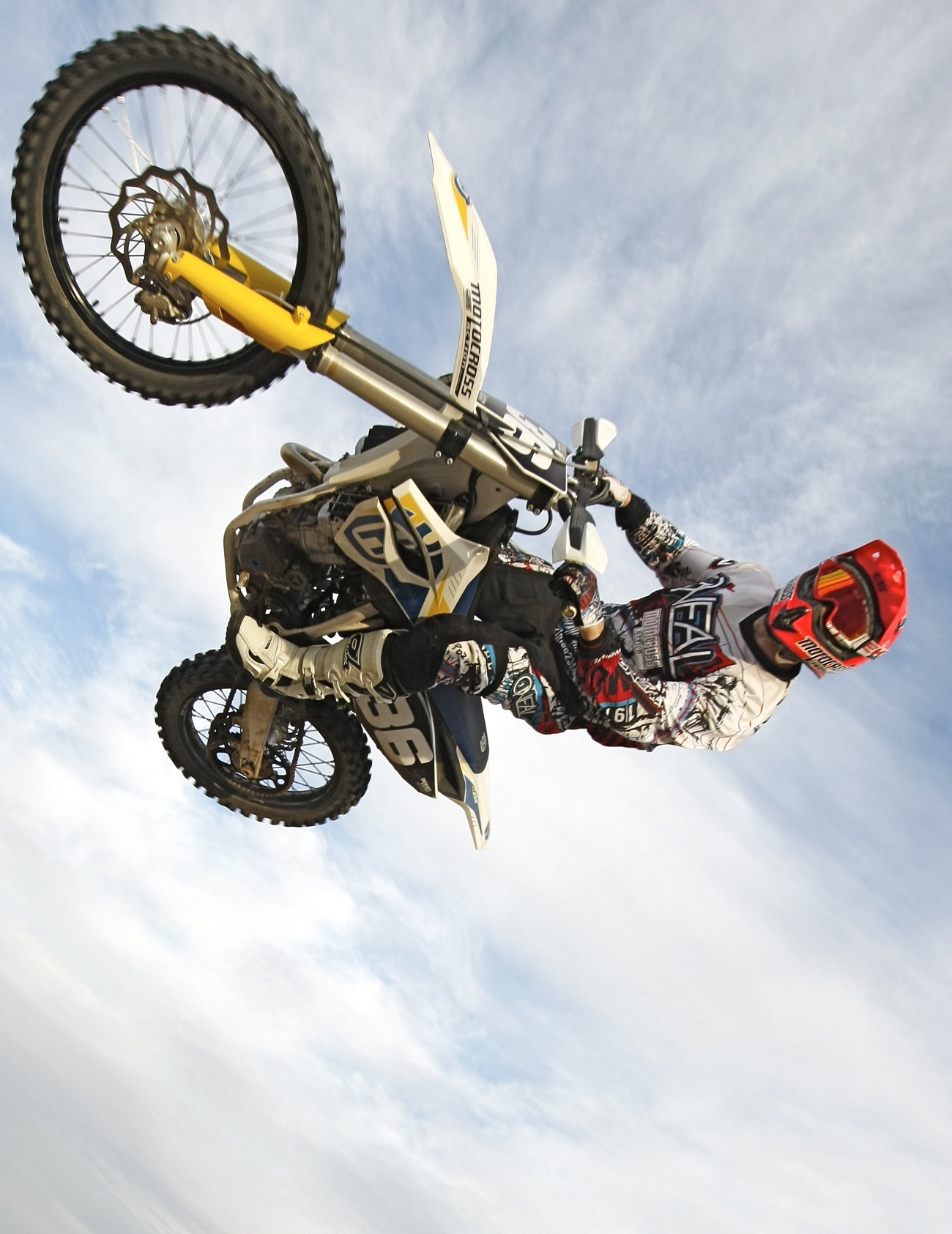
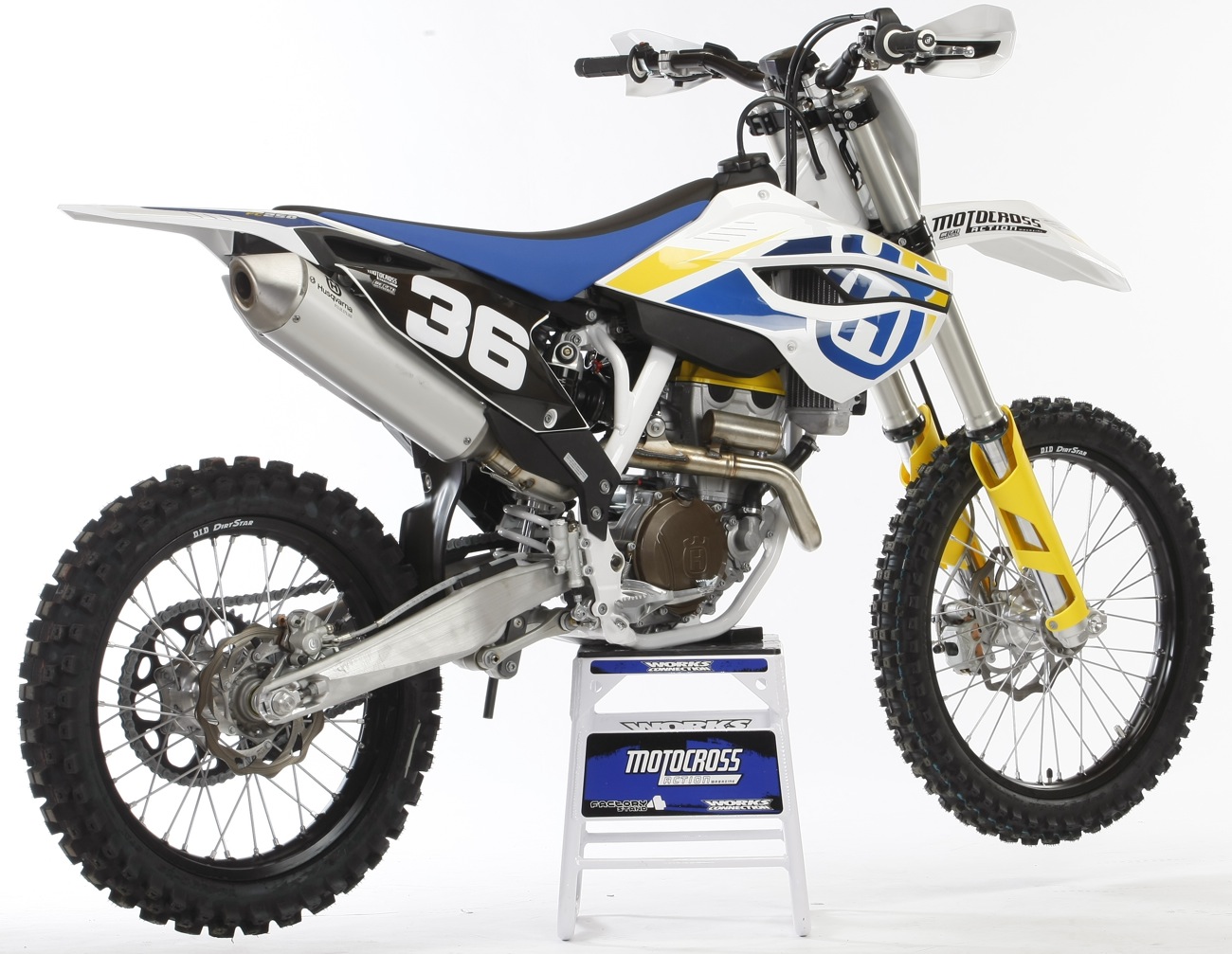
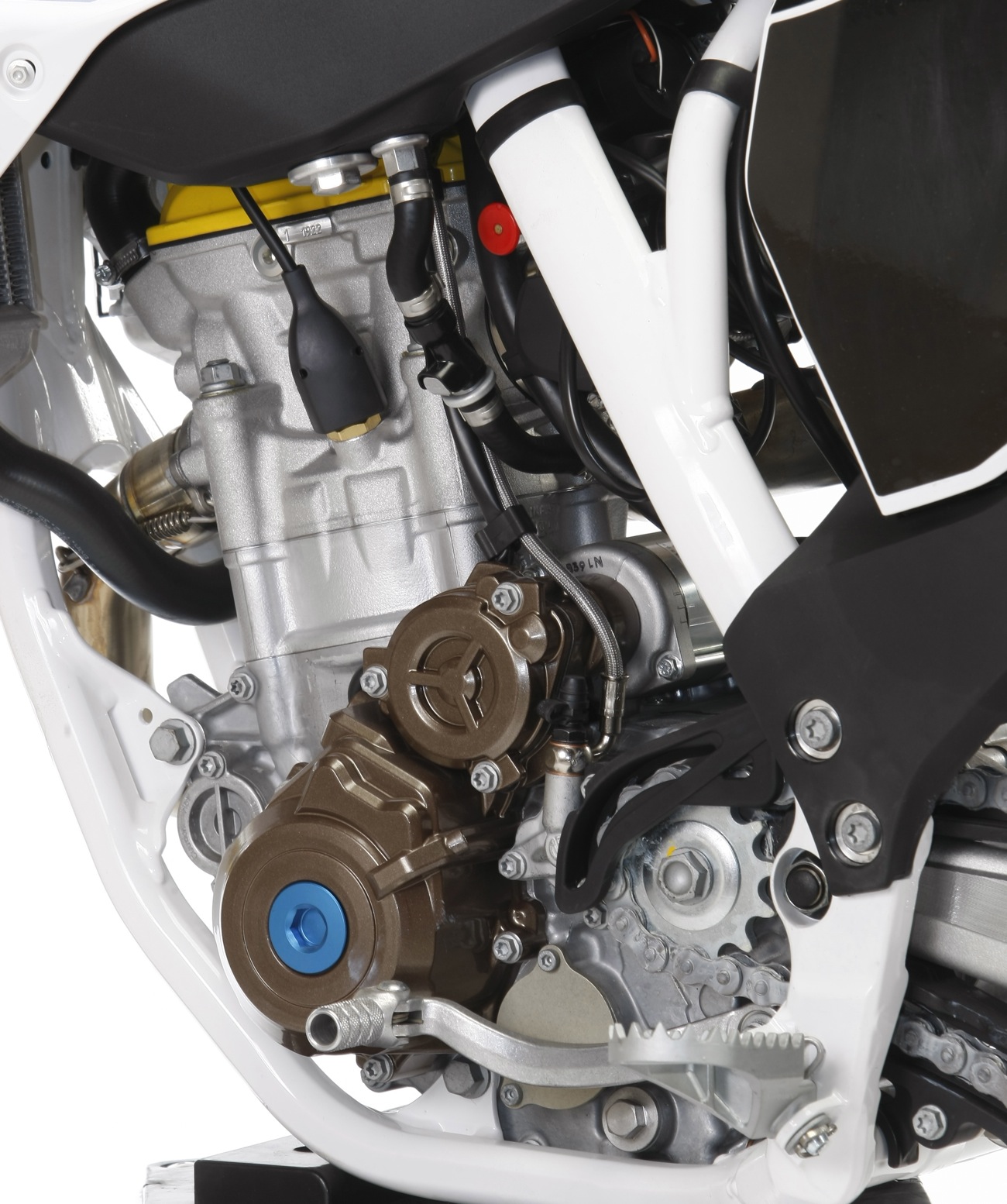
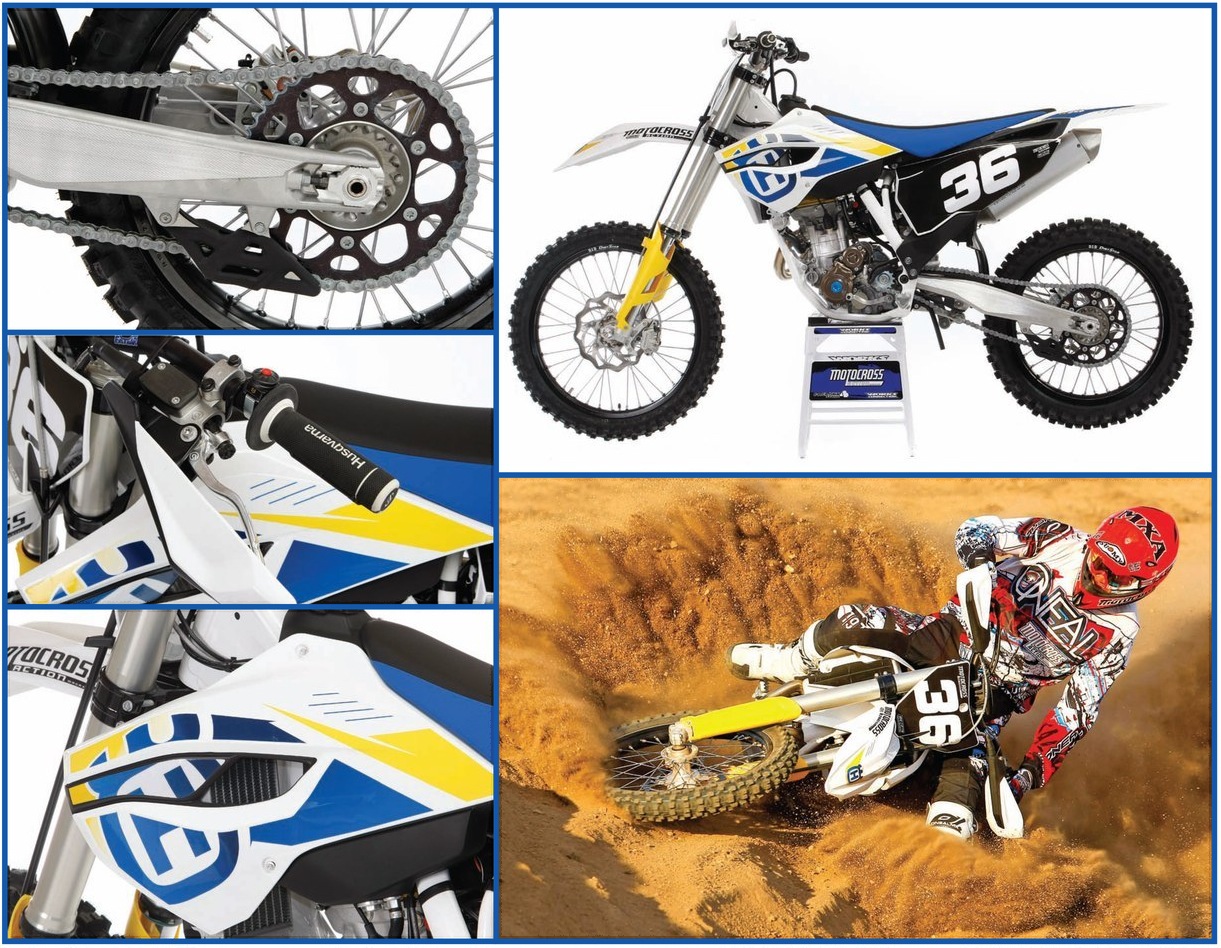
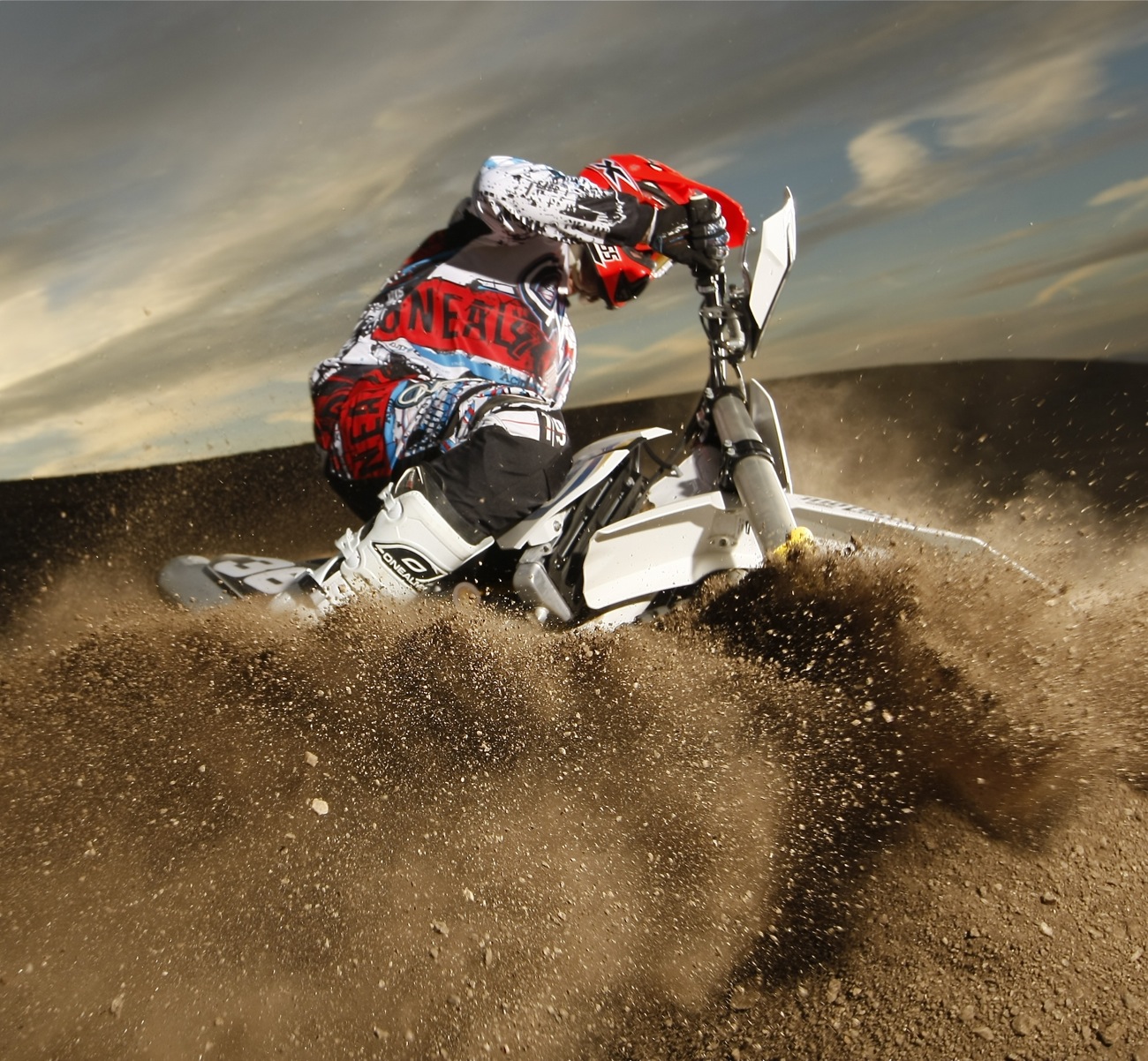
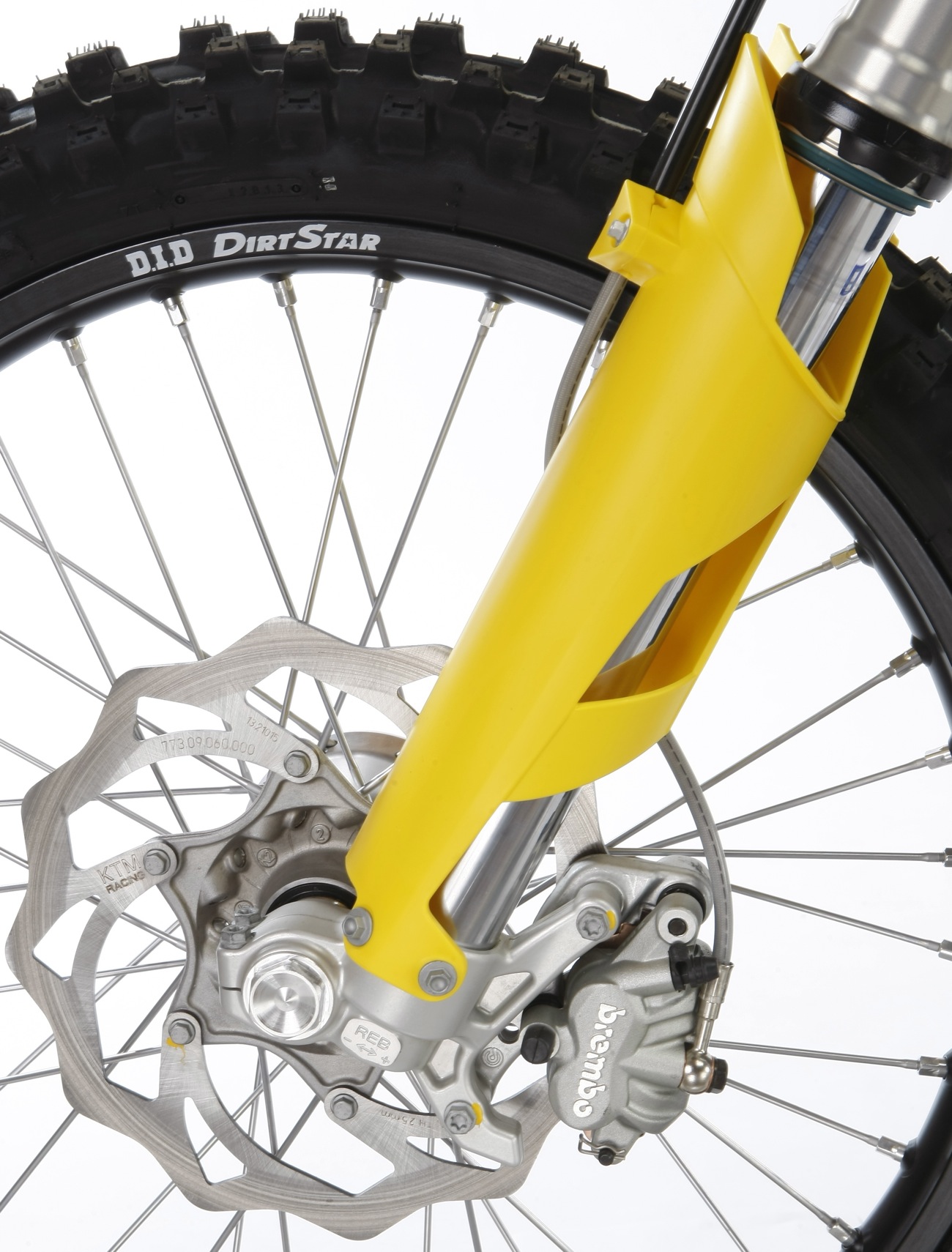

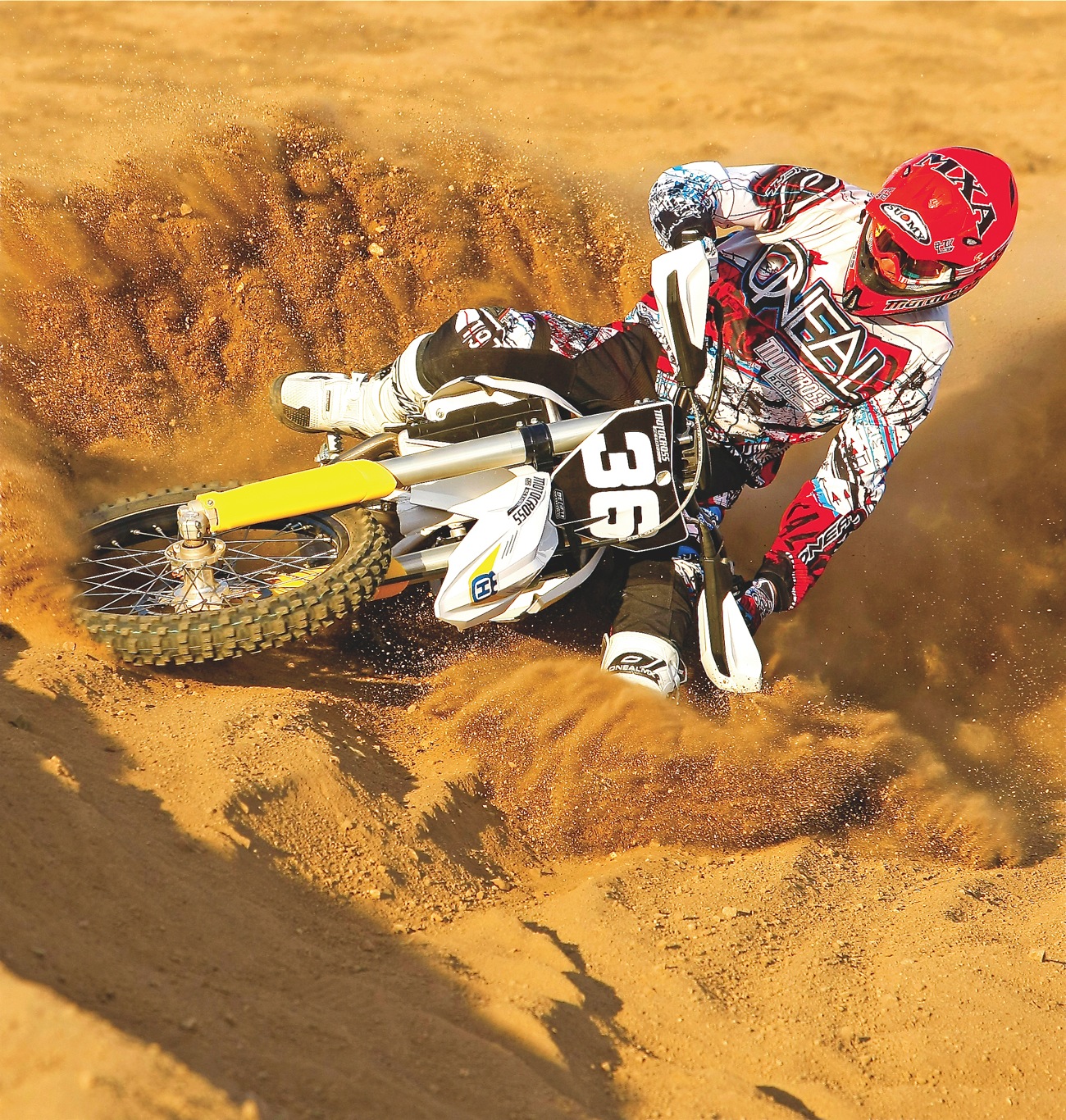
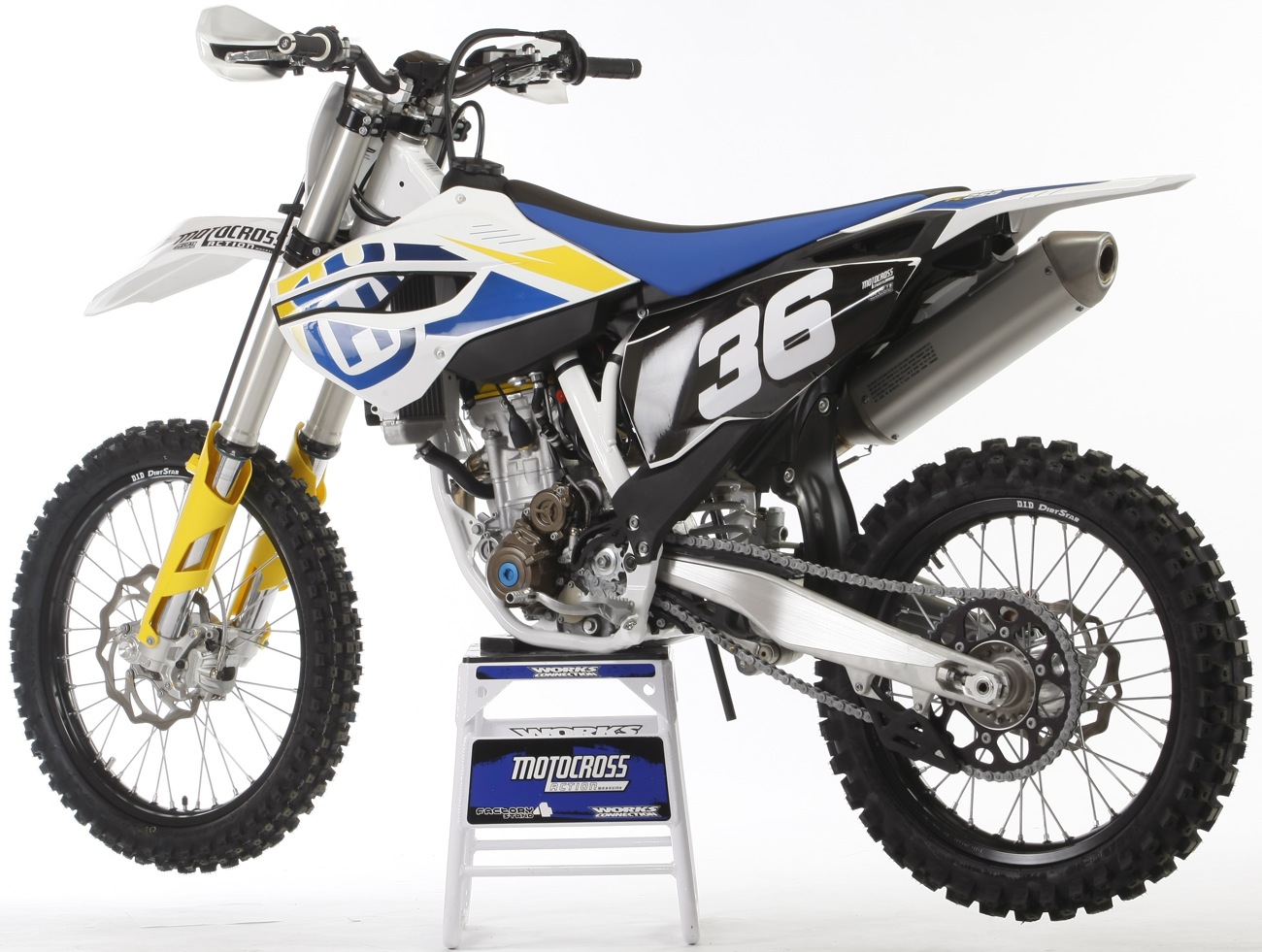
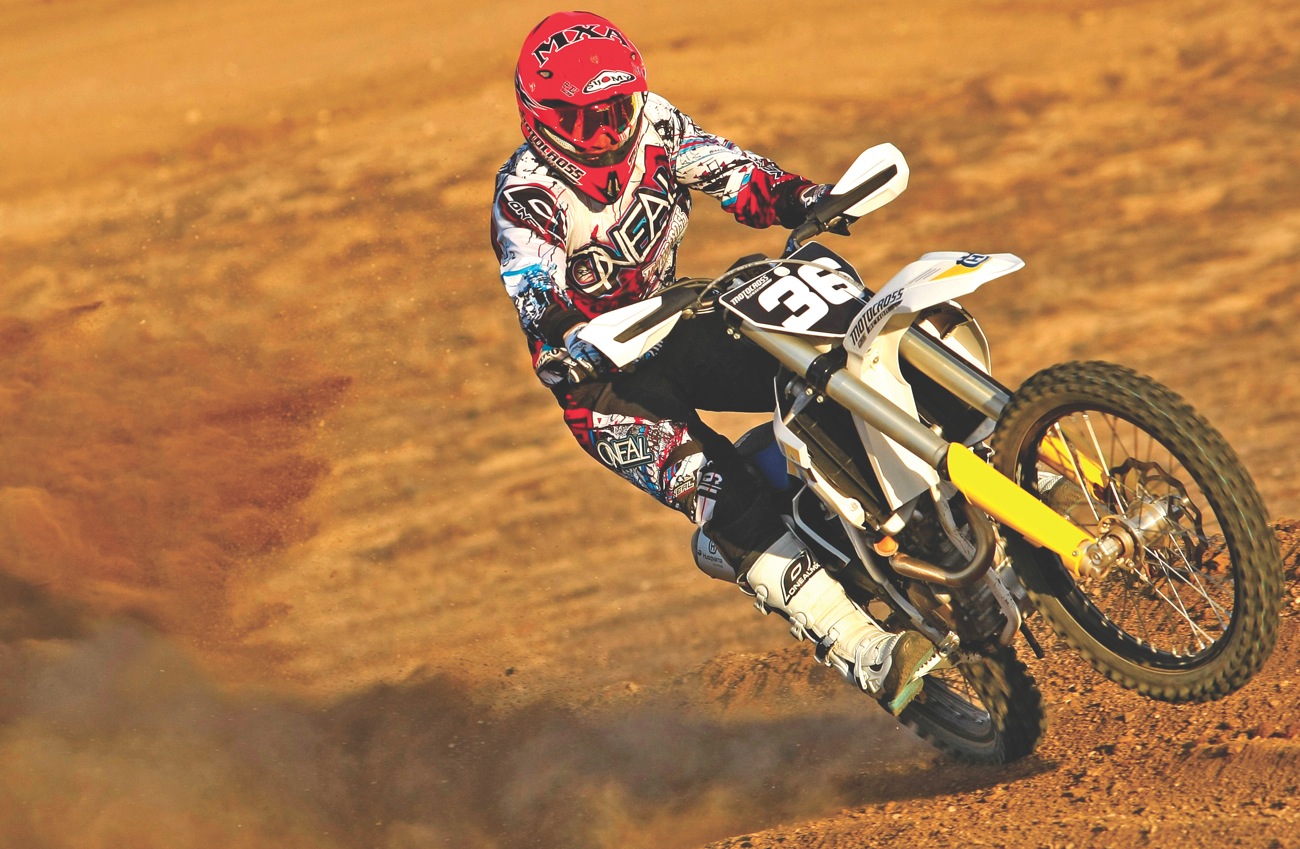




Comments are closed.